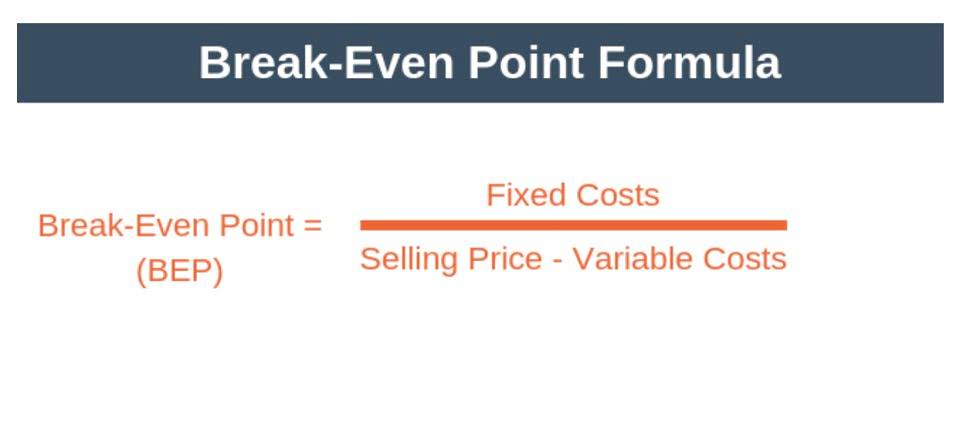Expanded Accounting Equation Overview, Formula, Examples

Buildings, machinery, and land are all considered long-term assets. Machinery is usually specific to a manufacturing business that has a factory producing goods. Machinery and buildings are often called PPE – Property Plant and Equipment. Unlike other long-term assets such as machinery, buildings, and equipment, land is not depreciated.
- This results in the movement of at least two accounts in the accounting equation.
- Double-entry accounting is used for journal entries of any kind.
- While it is primarily used by accountants, having an understanding of this equation can be beneficial for business owners, managers, investors, and anyone interested in gaining a deeper insight into business finance.
- These two components are contributed capital and retained earnings.
- These equity relationships are conveyed by expanding the accounting equation to include debits and credits in double-entry form.
The Financial Accounting Standards Board had a policy that
allowed companies to reduce their tax liability from share-based
compensation deductions. This led companies to create what some
call the “contentious debit,” to defer tax liability and increase
tax expense in a current period. See the article “The
contentious debit—seriously” on continuous debt for further
discussion of this practice. As you can see from all of these examples, the expanded equation always balances just like the basic equation. Let’s take a look at a few example business transactions for a corporation to see how they affect its expanded equation.
Expanded Accounting Equation: Definition, Examples & FAQs
Notice that all of the equations’ assets and liabilities remain the same—only the ownership accounts are changed. Cash includes paper currency as well as coins, checks, bank accounts, and money orders. Cash activities are a large part the accounting equation may be expressed as of any business, and the flow of cash in and out of the company is reported on the statement of cash flows. Cash (asset) will reduce by $10 due to Anushka using the cash belonging to the business to pay for her own personal expense.

This illustration aims to provide a clear understanding of the Expanded Accounting Equation, making it easier to grasp its importance in financial analysis and business decision-making. Adam Hayes, Ph.D., CFA, is a financial writer with 15+ years Wall Street experience as a derivatives trader. Besides his extensive derivative trading expertise, Adam is an expert in economics and behavioral finance. Adam received his master’s in economics from The New School for Social Research and his Ph.D. from the University of Wisconsin-Madison in sociology.
Accounting for Managers
The accounting equation expanded allows analysts and investors better understand how the company makes use of its profits and stockholders’ equity (to reinvest in the business, increase retained earnings, or pay dividends). The owner’s investments in the business typically come in the form of common stock and are called contributed capital. There is a hybrid owner’s investment labeled as preferred stock that is a combination of debt and equity (a concept covered in more advanced accounting courses). The company will issue shares of common stock to represent stockholder ownership.
- This led companies to create what some
call the “contentious debit,” to defer tax liability and increase
tax expense in a current period. - Before we explore how to analyze transactions, we first need to
understand what governs the way transactions are recorded. - Equipment is considered a long-term asset, meaning you can use it for more than one accounting period (a year for example).
- Stockholder transactions can be seen through contributed capital and dividends.
- Unearned revenue represents a customer’s advanced payment for a product or service that has yet to be provided by the company.
- For example, a company uses $400 worth of utilities in May but is not billed for the usage, or asked to pay for the usage, until June.
The beginning retained earnings is a measure of the stockholders’ equity at the beginning of the calculation period so the impact of contributed capital, dividends, revenue, and expenses can be measured. The expanded accounting equation is a more detailed version of the common accounting equation. It provides greater detail on the different sections of shareholders’ equity, allowing companies to see how their profits are used. Accounts payable recognizes that the company owes money and has not paid. A notes payable is similar to accounts payable in that the business owes money and has not yet paid. Some key differences are that the contract terms are usually longer than one accounting period, interest is included, and there is typically a more formalised contract that dictates the terms of the transaction.
LO 3.2 Define and Describe the Expanded Accounting Equation and Its Relationship to Analyzing Transactions
Assets are represented on the balance sheet financial statement. Some common examples of assets are cash, accounts receivable, inventory, supplies, prepaid expenses, notes receivable, equipment, buildings, machinery, and land. Assets are
resources a company owns https://www.bookstime.com/ that have an economic value. Assets are
represented on the balance sheet financial statement. Some common
examples of assets are cash, accounts receivable, inventory,
supplies, prepaid expenses, notes receivable, equipment, buildings,
machinery, and land.
- There is a hybrid owner’s investment labeled as preferred stock that is a combination of debt and equity (a concept covered in more advanced accounting courses).
- Machinery and buildings are often called PPE – Property Plant and Equipment.
- The key benefit of using the expanded accounting equation is the extra visibility it provides into how the various components of the equity section of the balance sheet change over time.
- Since the business has not yet provided the product or service, it cannot recognise the customer’s payment as revenue, according to the revenue recognition principle.
- This illustration aims to provide a clear understanding of the Expanded Accounting Equation, making it easier to grasp its importance in financial analysis and business decision-making.
Therefore, the company must record the usage of electricity, as well as the liability to pay the utility bill, in May. At the point they are used, they no longer have an economic value to the organization, and their cost is now an expense to the business. As was previously stated, double-entry accounting supports the expanded accounting equation. Double-entry accounting is a fundamental concept that backs most modern-day accounting and bookkeeping tasks.
Since the company has not yet provided the product or service, it cannot recognize the customer’s payment as revenue, according to the revenue recognition principle. The company owing the product or service creates the liability to the customer. Liabilities are obligations to pay an amount owed to a lender (creditor) based on a past transaction. It is important to understand that when we talk about liabilities, we are not just talking about loans. Money collected for gift cards, subscriptions, or as advance deposits from customers could also be liabilities. Essentially, anything a company owes and has yet to pay within a period is considered a liability, such as salaries, utilities, and taxes.
